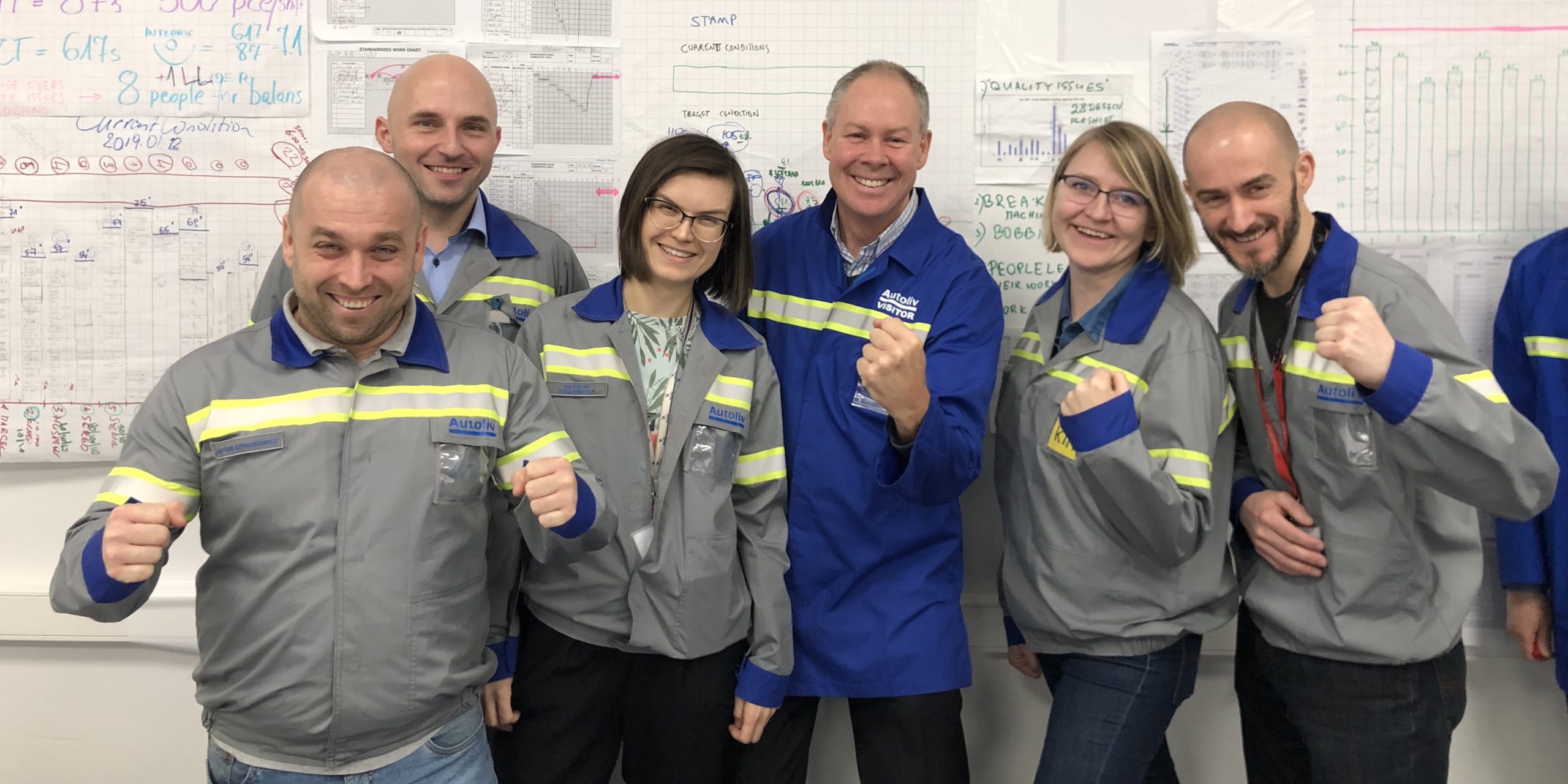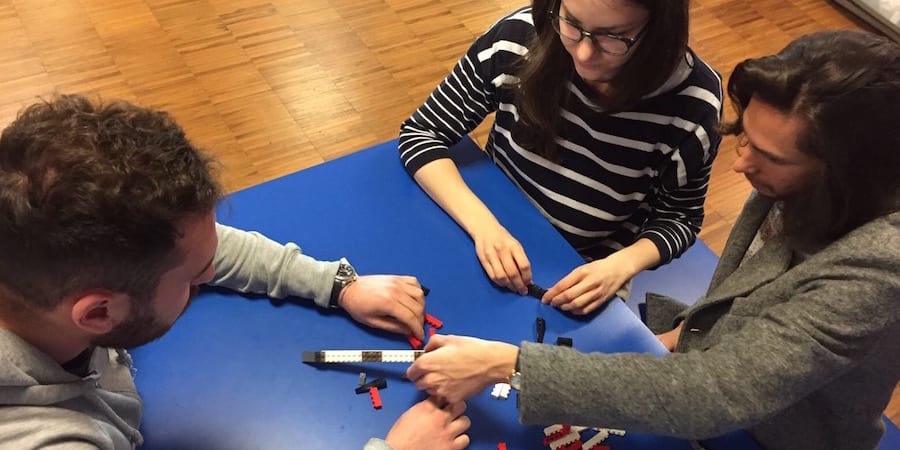
Lean in SMEs
FEATURE – SMEs represent the backbone of many economies, but few of them contemplate embarking on a lean transformation. The author discusses why and offers some tips to help them embrace lean.
Words: Severino Abad, Lean Coach, Instituto Lean Management – Barcelona
Because of their characteristics, SMEs can represent a difficult environment in which to initiate a lean transformation. In this article, I’d like to share a few tips that, based on my experience, can help a small or medium-sized company to successfully carry out a lean turnaround – or at very least begin it in the best possible way.
There are several ways to categorize businesses, with the number of employees and the annual revenue appearing to be the most common around the world. In Spain, like in the rest of the European Union, the classification is as follows:
- Self-employed professional;
- Micro enterprise: less than 10 employees and revenue under €2 million/year;
- Small enterprise: between 10 and 49 employees, and revenue between €10 y €49 million/year;
- Medium enterprise: between 50 y 249 employees and revenue higher than €50 million/year;
- Large enterprise: more than 250 employees.
According to official November 2020 figures, in Spain there are 1,588,553 self-employed people, 1,111,068 micro enterprises, 147,728 small enterprises, 24,216 medium enterprises, and 4,791 large enterprises. This means that for every large company there are more than 330 self-employed people, 230 micro enterprises, 30 small enterprises and 5 medium ones.
The distribution of jobs across these categories, out of the nearly 16 million salaried employees in Spain, is as follows:

This means that 64% of all jobs in Spain depend on SMEs. With a few adjustments, this is largely the same ratio that exists in the rest of the European Union. Globally, it is believed that SMEs represent more than 90% of the business landscape and employ more than half of the world population. Indeed, SMEs play a critical role in the economy. And let’s not forget the huge number of startups with a strong focus on innovation and technology.
Despite this, and somewhat surprisingly, lean transformations in SMEs are a very rare occurrence. According to research, only 10% of SMEs consider embarking on a lean turnaround.
Among the possible explanations for this are the lack of commitment from the management team, which in turn results from a lack of awareness of what a great contribution Lean Thinking can give to a company or, worse, from a failure to recognize that there is a need to make changes to the management approach in use in the business. This sort of thinking might speed up decision making, bring flexibility to take on new projects and ensure the consistency of the company’s vision, but it also hinders the growth of the business by making it harder to delegate, develop leadership skills across the organization and rely on teamwork for a better distribution of the work. These aspects typically take the form of muri in leadership and can lead to inadequate decisions. What’s more, when this “superhero” type of leader moves on for whatever reason – whether retirement or a new job – the results are typically very negative. The following graphic shows the survival rate of SMEs through generational leaps:

Why is this? I think the problem lies in the company’s own modus operandi, the failure to create a well-structured organizational model that taps into the full potential of all elements of a business (its people, its suppliers, its know-how, etc) or the mistake of making it a mere prerogative of the owner/entrepreneur. In most cases, we see a tendency to stop workers from taking on a number of key responsibilities and force them to simply follow the boss’s orders. Furthermore, the limited number of people on the payroll in an SME and the all-too-common incorrect measurement of the capacity of orders they can handle make it impossible to develop and/or retrain employees. This situation is often made worse by the sheer amount of waste front-line people have to endure in their daily work.
Indeed, very few SMEs formalize a 3- to 5-year strategic plan outlining where they want to go and how they intend to get there. The common idea is that the winning idea of the entrepreneur is enough and that the relatively simple structure of the organization will allow him or her to quickly pivot if necessary. Nonetheless, SMEs rarely have processes in place to assess how the business is doing against the strategic plan and to anticipate problems. Even when the entrepreneur identifies the need to change course, they typically decide to make the pivot using technology. In this type of company there is something of an obsession with not growing over a certain number of employees – no more than those who are strictly necessary – to create value for customers, centralizing all indirect tasks in the hands of management. The automation of production and even administrative processes is common in these organizations. To an extent, this model works. But as soon as the company succeeds and starts to grow in size, product offering and complexity, the leader is no longer able to control the situation and the high level of automation in the processes ends up making an organization that was flexible and adaptable vulnerable to changes and prone to collapsing.
Many SMEs have their origins in the technical knowledge of the entrepreneur, which isn’t always shared with the entire workforce. Working relationships appear based on the idea that people are “paid to work, not to think”, concentrating the company’s all-important know-how in the hands of the few (normally high up in the hierarchy), who are then forced to play a very central role in innovation and process and product improvement. This means that there are hardly any initiatives born out of the front line and that the talent of the workforce is all but ignored. People aren’t given the time to think, nor are there any training activities to empower them.
In an SME, management is very close to products, services and customers. In fact, they often have a clear responsibility in all of those areas – for example, they have direct contact with customers, which makes for a smoother flow of information. Yet, the small size of SMEs often means that these companies will have a limited number of customers, who often don’t represent the actual evolution of the market. Because the success of a business hinges on its ability to interpret market changes and anticipate customer needs and ever-growing demands, innovation and project management in SMEs often appear unstructured and managed in push mode – with a lot of improvisation, overstretched resources and questionable results.
Lastly, the adoption of structured organizational models like lean often encounters obstacles because of the entrepreneur’s lack of knowledge or lack of time (being a firefighter takes time away from working on the business’ survival and long-term goals).
SMEs are oriented towards the search of operational excellence that can keep them competitive in a market dominated by large and resource-rich corporations. When they do decide to embark on a lean transformation, it’s typically because they want to improve operations and business results; fight the increasing number of competitors challenging the company’s position in the market, by improving operational performance; meet the changing needs of customers in a more agile and robust manner; strengthen the organization and get it ready for a potential generational leap, striking a balance between the entrepreneurial spirit of the owner and the flexibility necessary to adapt to changes; or access certain markets or funding that look for profitable and operationally sound businesses.
A FEW TIPS FOR SMEs
In light of all this, and based on my experience, I’d like to share a few recommendations that might help SMEs to leverage the full potential of Lean Thinking and achieve the results we know it can bring to an organization.
- Learn about lean principles and how they can apply to your unique context. Luckily, there are several success stories to draw inspiration from – even if you are not Toyota and you don’t make cars. Remember the quote from Fujio Cho, who said that Toyota “makes people before it makes cars”? No matter what we do or where we are in the world, we can recognize ourselves in these words. For more on this, I recommend you read Lean Transformations for Small and Medium Enterprises: Lessons Learned from Italian Businesses by Arnaldo Camuffo, our colleague from Istituto Lean Management in Italy.
- Develop your lean knowledge from the perspective of a practitioner but also from that of a leader. Your company needs technical knowledge and entrepreneurship, but it also needs the right leadership to create the ecosystem in which lean can be leveraged in full.
- Together with your team, ask yourself the five questions of John Shook’s Lean Transformation Framework. This will help you to develop a different view of your business and allow you to discover what your organization needs to achieve operational excellence. You’ll learn what problem you and your team need to solve.
- Identify the KPIs that best reflect customer needs and that allow you to regularly monitor your current performance. It’s important to agree with the team what results are to be achieved for each KPI in the following period of time - for example in the following trimester. This will lay the foundations you need to then formalize a 3 to 5-year strategic plan that outlines what you want to achieve, under what parameters and through what activities.
- Free up resources and time to create the basic infrastructure that is necessary to ensure the success of the transformation. You will need people who think about creating a well-structured operating system, about standardization of tasks, about the pursuit of continuous flow and perfection, about value creation. This initial investment will pay great dividends in time.
- Prioritize and facilitate problem solving for the issues faced by front-line workers with the goal of improving the quality of their work and ensuring everyone feels nurtured by leadership.
- Make processes visible and implement a simple system to monitor them that is based on visual management so that responsibility for results can be delegated to those who are part of the process itself. From here, you’ll need to establish clear procedures for the resolution of the most pressing issues, not just those people want to tackle.
A ROADMAP
At this point, you can continue with the construction of your organizational model by following these steps:
- Make the most of the flat structure of your organization to establish solid channels of communication and make decisions in a smoothly, transparently and quickly, both bottom up and top down. This way you will achieve the flexibility and reactivity you need to meet the needs of your clients and teams at all times.
- Empower your team to engage in daily decision-making. You can participate in the process, but not monopolize it; your team needs to be able to make the right decisions just like you would. Use kata to achieve this and ensure that the company stays true to its values over time and independently of individual beliefs. Facilitate and demand learning, especially through mistakes.
- Establish training programs and opportunities for personal and professional development for everyone. These will help people to reach their objectives over time, as well as encourage them to join a common project. Among the first things you want to teach your team there is without a doubt the identification of waste and the tools and concepts, like PDCA, used to reduce it or eliminate it.
- Create moments of reflection to motivate and incentivize the participation of all team members in the attainment of objectives. Use tools like hoshin kanri to deploy the strategy at all levels of the businesses and also to share and communicate the challenges the company is facing. It’s critical to inject kaizen thinking into the daily work.
- Recognize the effort made by employees to reach the objectives through the execution of the strategic plan and always strive to address gaps as soon as they appear. Of course, you should celebrate successes and analyze failures with the idea of generating learning that can be used in the future.
- Leverage the establishment of these processes to create synergies with suppliers, customers and even potential investors. By doing this, you will be able to rethink your entire business system in a lean perspective.
- Important for customer relationships and connected to new product development is the all-important use of tools that can help you to bring objectivity to the interpretation of customer needs and to use MVPs (minimum viable products) as a way of ensuring the success of a product and maximizing customer satisfaction.
- You might want to consider relying on a lean coach who can help you take your first steps in this brave new lean world. It’s important to set off on this journey towards a new way of managing your business in the strongest possible way.
Never forget the reason you decided to create your business in the first place and remember to share the values that inform you with the rest of the organization. This will be very useful when it comes to finding people who can help you sustain results and keep lean alive no matter what the market might throw at you. When the mission, vision and values of a company are communicated personally people, you will be able to generate the empathy you need to ensure everyone rallies around a common goal.
THE AUTHOR

Read more


INTERVIEW – What skills do coaches need to successfully support lean transformations in the service sector? Our colleagues from Australia tells us about their experience.


WOMACK'S YOKOTEN – How it is that some ideas and innovations spread like wildfire while others are slower to take roots? It is clear that lean thinking belongs to the latter category, but how can we speed up its diffusion?



FEATURE – In a world of disruptive innovation, being faster and smarter at developing new products has become critical. The authors explain why set-based concurrent engineering is the answer, and why a game is the best way to learn it.


FEATURE – As her new book comes out, the author discusses how it is people who breathe life into an organization and how much a leader’s behavior can influence them.

